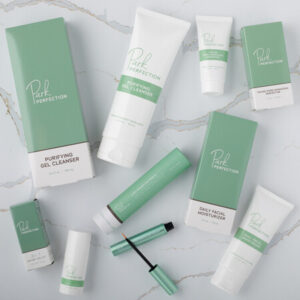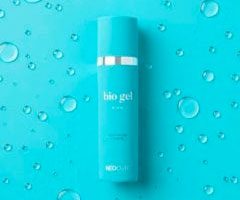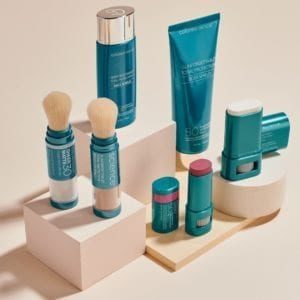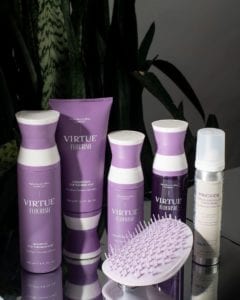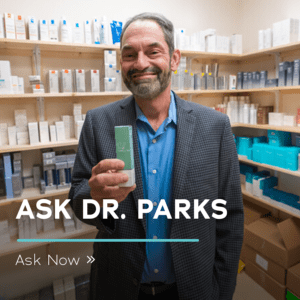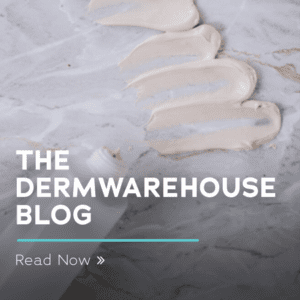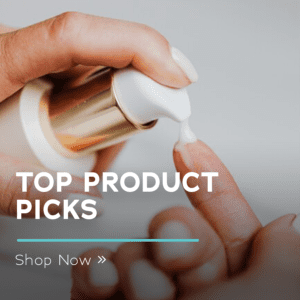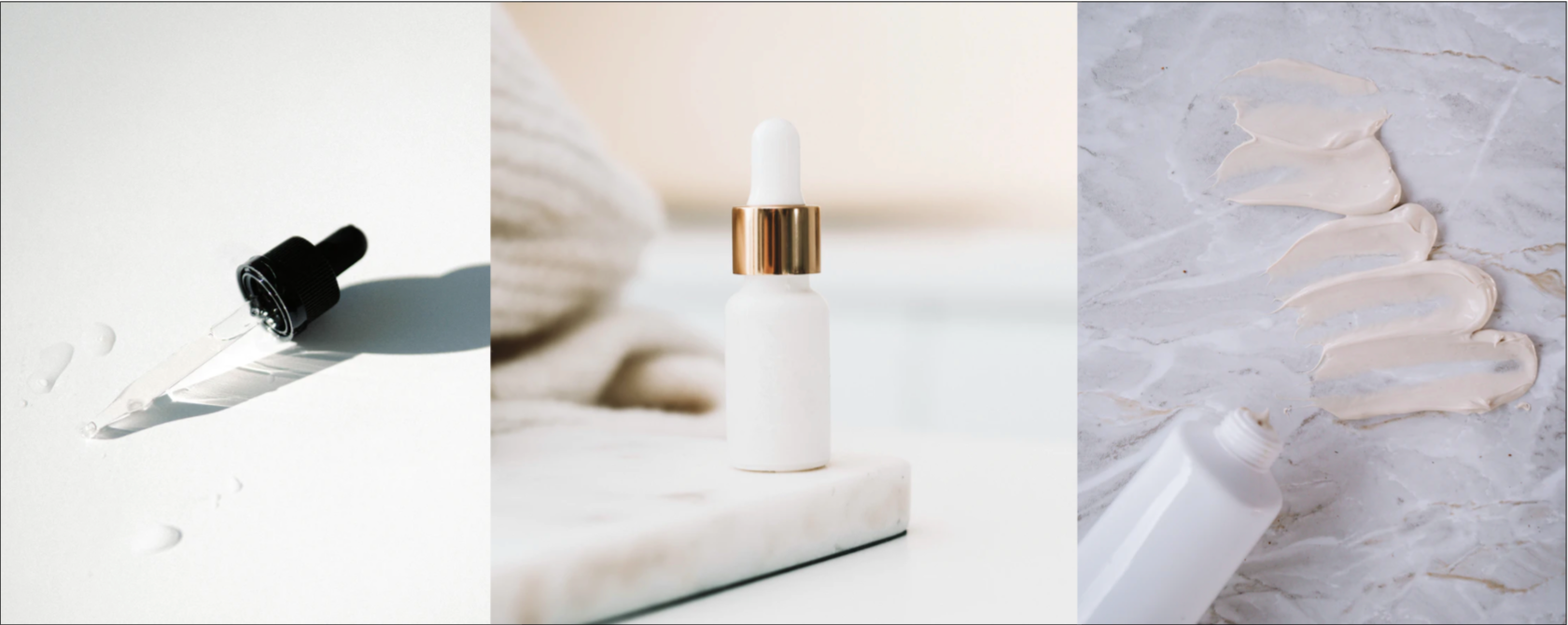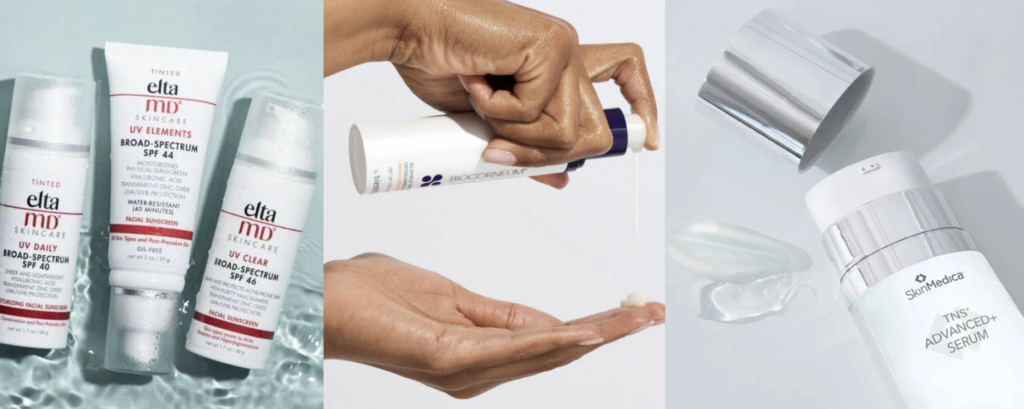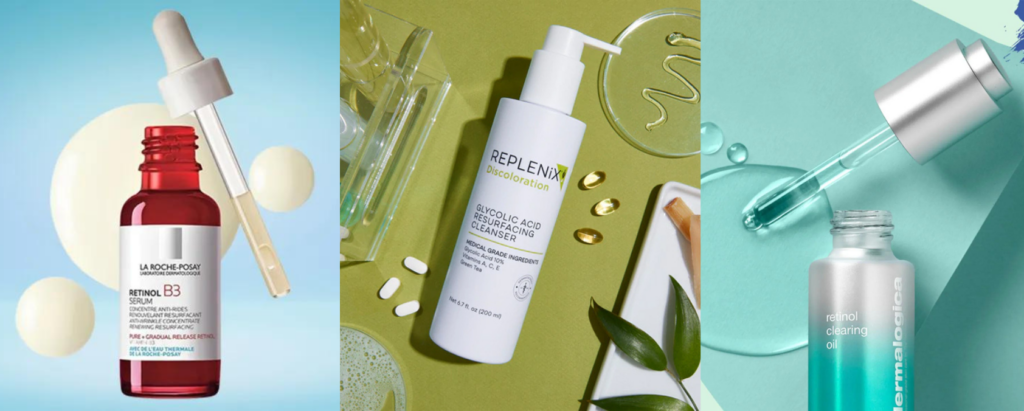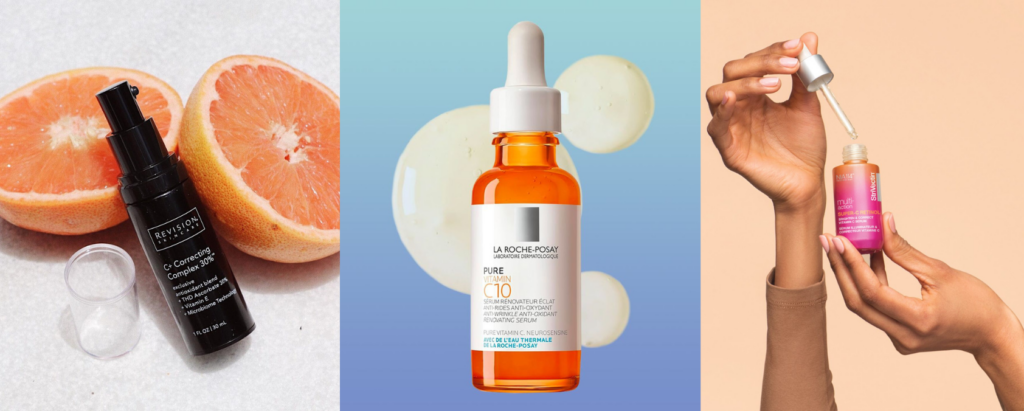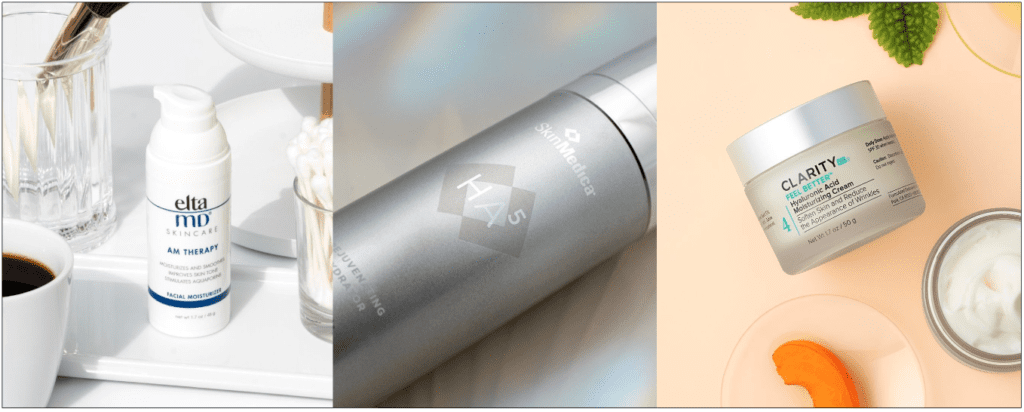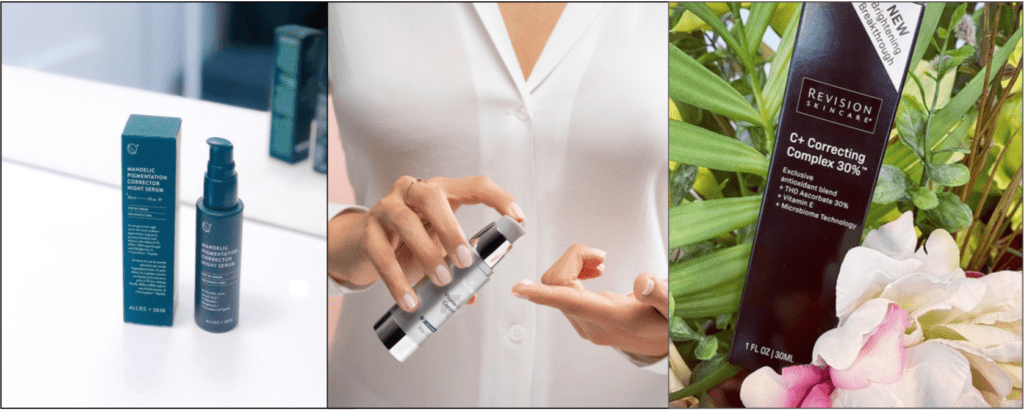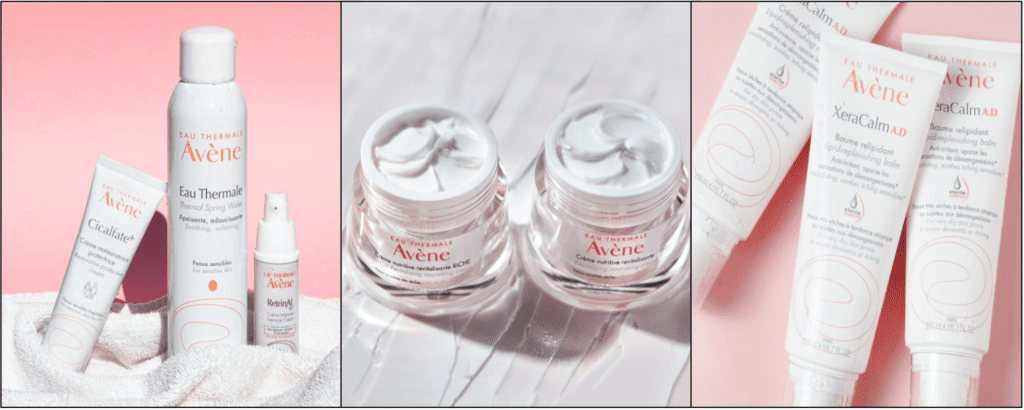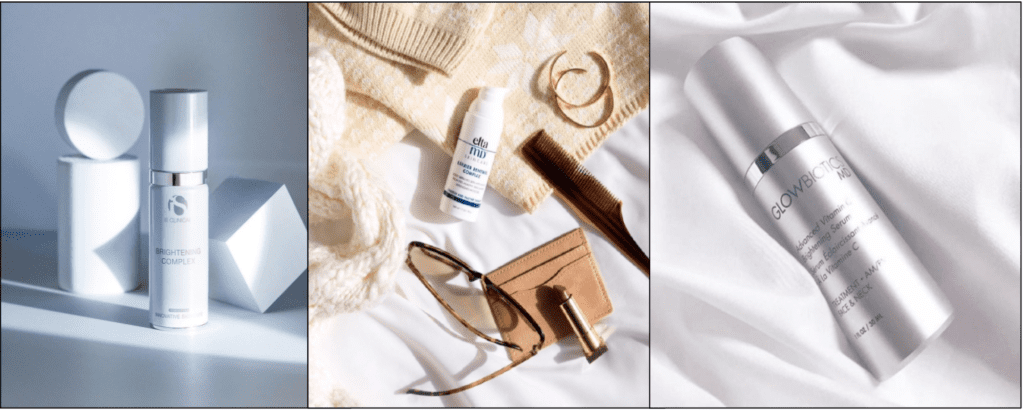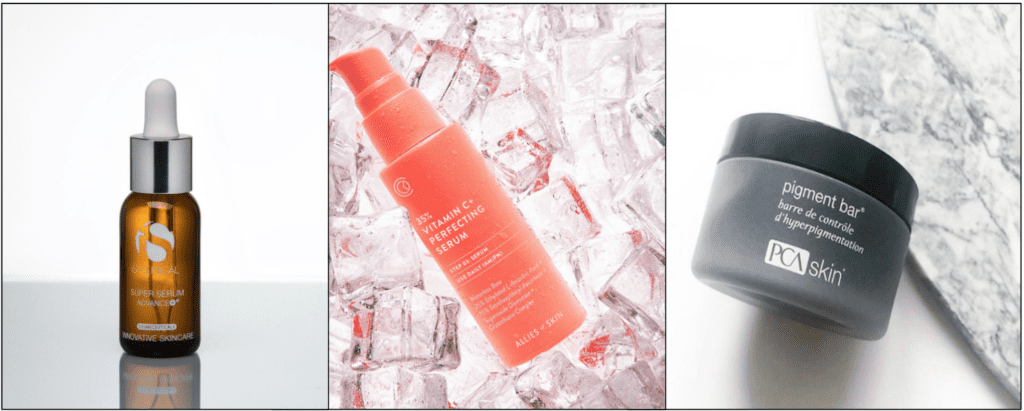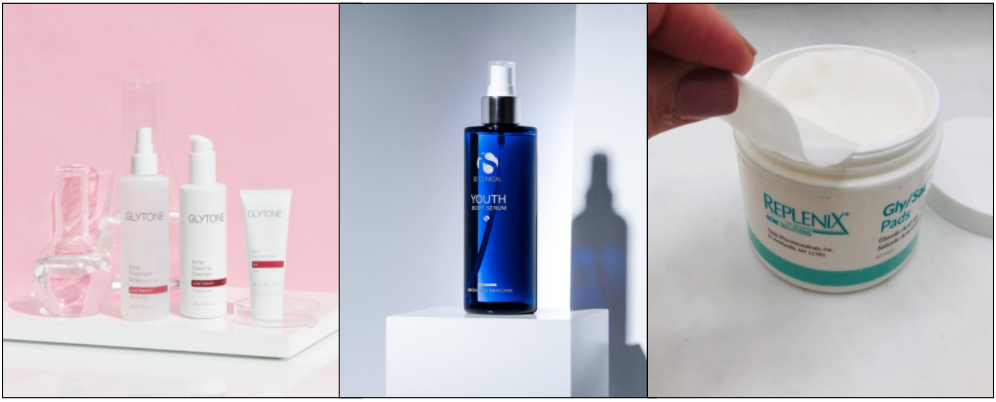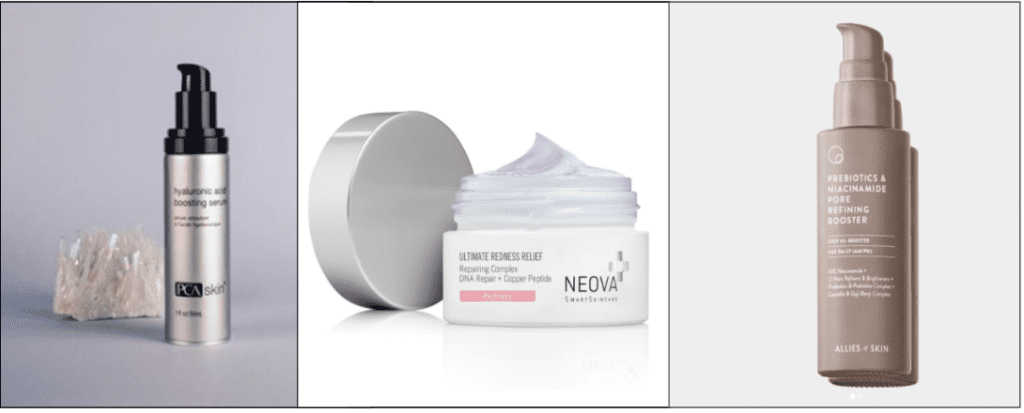When you hear about a new skincare product on the market, you’ll often hear mostly about the actives in that product, whether it’s glycolic acid, hyaluronic acid, or retinol. However, ingredient lists often have a hefty list of things you may not recognize, and it’s important to always be aware of what’s in the products you’re using due to potential allergies, irritation, or just simply to be aware! First, we’ll walk you through how to actually read the label and what the order of ingredients means. Next, we’ll go through what your typical ingredients (hyaluronic acid, retinol) might look like on your skincare ingredient label. Last, we’ll talk about what some of those long, scientific-looking ingredients are and what they do for your products.
Reading Skincare Ingredient Labels
The International Nomenclature of Cosmetic Ingredients (INCI) creates the standard for listing ingredients on cosmetic products. This system creates a basis for how ingredients need to be listed. When you’re looking to buy a new product, the list of ingredients on the back can look pretty intimidating. You’ll recognize water, as it’s typically the first ingredient listed. Water usually takes up the largest part of the formula in your skincare products, which is important to know as your product label lists ingredients from highest concentration to lowest concentration.
You may have heard that the top 5 ingredients listed are often the most important- this is true since they’re the most prominent ingredients in the formula. This also means that if a product is saying that it’s formulated with retinol, but retinol is the last ingredient listed, it truly doesn’t contain as much retinol as it may seem and may not be as effective. It goes the other way as well- if there’s an ingredient you don’t quite recognize or tend to steer clear from, for example, sodium lauryl sulfate, listed in the top five ingredients, it’s worth asking your dermatologist or simply avoiding that product.
What to Look for On Your Skincare Ingredient Label
There are a few other things to keep an eye out for on cosmetic labels, including marketing terms. If a product states that it’s “natural“, it typically means there are a few naturally-derived ingredients in the product, and the entire ingredient list doesn’t have to be completely natural.
“Hypoallergenic” formulas are important for those with sensitive or reactive skin, as their ingredients are less likely to cause allergic reactions.
If a product says that it’s “non-comedogenic“, it means that its ingredients are known to not clog pores, making it great for acne-prone skin.
Another thing to look for is the PAO symbol– it typically looks like a photo of a little container on the back of your product with a number in it. This number shows the product’s expiration date, or “period-after-opening” that it’s best to use the product before.
You might also see what looks like a little bunny on the back of your product. This signifies that the product is Leaping-Bunny Certified, meaning that it was created using cruelty-free methods, i.e. that it wasn’t tested on animals.
Active Ingredients
Whether your go-to product includes Vitamin C, hyaluronic acid, or retinol, it’s important to understand that these ingredients may go by different names on your skincare labels. Don’t panic if your favorite hyaluronic acid serum, for example, doesn’t list “hyaluronic acid”- it can go by a variety of different names.
Vitamin C– you may see Vitamin C called a number of different things, depending on the type of Vitamin C that’s included. Examples include ascorbic acid, ascorbyl palmitate, sodium ascorbate, sodium ascorbyl phosphate, magnesium ascorbyl phosphate (MAP), tetrahexyldecyl ascorbate (THDA), ascorbyl glucoside, and ascorbyl glucosamine.
Glycolic Acid– This beloved exfoliant for skincare can be found in a few different ways, including a-Hydroxyacetate, dicarbonous acid, hydroxy-acetic acid, alpha-Hydroxyacetate, and a-Hydroxyacetic acid.
Salicylic Acid– This chemical exfoliant may also be listed as its class of acid, beta-hydroxy acid (BHA).
Green Tea– This calming extract may also be called Camellia Sinensis Leaf Extract, Thea Chinensis Extract, and Camellia Sinensis (Tea Plant) Leaf Extract.
Hyaluronic Acid– Your favorite hydrator goes by a few different names, including glycosaminoglycans, sodium hyaluronate, and hyaluran.
Niacinamide– Niacinamide can also be called Vitamin B3, niacin and nicotinic acid in skincare.
Retinol– You might see retinol listed additionally as retinyl palmitate, retinyl acetate, and retinyl linoleate.
Check out our skincare ingredient glossary to learn more about the ingredients you’re seeing in your skincare!
What are those long, scientific-looking ingredients though?
This is where many find themselves confused about what is truly in their skincare products- these are the ingredients that have scientific names and can be difficult to decipher. Here are a few common ones that you might see and what they do.
Emulsifiers:
These keep different substances (such as oil and water) from spreading apart from each other. They allow the other ingredients to blend and create a seamless texture. You might see these included as polysorbates, laureth-4, and potassium cetyl sulfate.
Preservatives:
These help maintain the shelf life of your product and prevent bacteria and other microorganisms from growing and damaging your skin. Some products are marketed to be preservative-free, as these ingredients can potentially be irritating if you have super sensitive skin. Be aware that these preservative-free products will have a shorter shelf life and may need to be stored differently than your other products. These might be listed as parabens, benzyl alcohol, salicylic acid, and tetrasodium EDTA (ethylenediaminetetra-acetic acid) on your skincare products.
Thickeners:
These help create a thick and creamy texture in your products. There are four different categories of thickeners; lipid thickeners, including cetyl alcohol, stearic acid, and carnauba wax, naturally-derived thickeners, including hydroxyethyl cellulose, guar gum, xanthan gum, and gelatin, mineral thickeners, including magnesium aluminum silicate, silica and bentonite, and synthetic thickeners, including cetyl palmitate, and ammonium acryloyldimethyltaurate.
Emollients:
These help prevent water loss and keep the skin hydrated. Emollients can be found as beeswax, olive oil, coconut oil, lanolin, petrolatum (petroleum jelly), mineral oil, glycerin, zinc oxide, butyl stearate, and diglycol laurate.
When it comes to skincare, the ingredients you’re using really matter, which is why it’s important to do your research whenever you’re looking at purchasing a new product. Don’t let long ingredient names or science intimidate you- reference this article whenever you’re shopping, and be sure to check out the ingredient preferences on each DermWarehouse product page for all the ingredient info you might need.

